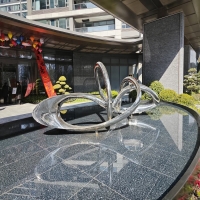Welcome to the website for landscape facilities products and knowledge.
How does the trash can's shape impact its aerodynamic properties in windy conditions?
The aerodynamic properties of a trash can play a crucial role in its performance during windy conditions. The shape directly impacts how wind flows around it, affecting stability and spillage risks.
Cylindrical trash cans, for instance, experience uniform wind pressure distribution, reducing the likelihood of tipping. However, their smooth surfaces allow wind to glide past with minimal resistance, which can still lead to movement if not weighted properly.
Square or rectangular designs create more wind resistance due to flat surfaces, increasing the chance of tipping. Sharp edges disrupt airflow, generating turbulence that may destabilize the can. Many modern designs incorporate tapered or rounded edges to mitigate this effect.
Conical or tapered trash cans demonstrate improved aerodynamics, as the narrowing top helps deflect wind upward. This design minimizes lateral force while maintaining a wide base for stability. Some high-wind models feature weighted bottoms or flared bases to enhance performance.
Innovative designs now incorporate airflow channels or perforations to reduce wind pressure buildup. These features allow wind to pass through rather than push against the structure. The ideal shape balances capacity needs with aerodynamic efficiency for the intended environment.
Material selection also interacts with shape—lighter materials require more aerodynamic shapes to compensate, while heavy steel cans may prioritize capacity over airflow optimization. Understanding these principles helps in selecting or designing trash cans for windy outdoor locations.
Related search:

Recommendation
Abstract art sculpture, stainless steel metal sculpture, large-scale water feature sculpture